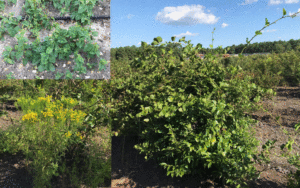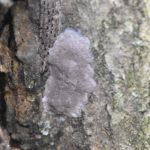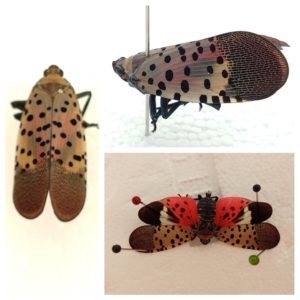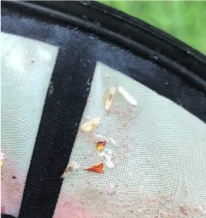The 24(c) Special Local Need Label for Stinger® that had expired on December 31, 2017 has finally been renewed up to December 31, 2020.
Stinger® is especially useful in blueberry for controlling composite and legume weeds. Common composite weeds found in our orchards include Canada thistle and other thistles, goldenrod species, aster species, common dandelion, mugwort (wild chrysanthemum), horseweed (marestail), and ragweed species. Legume weeds include vetch species and clover species.
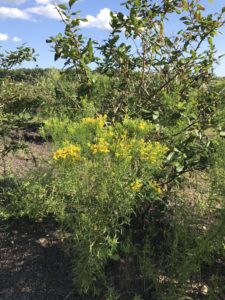
Deep rooted perennials like goldenrod require multiple Stinger applications
The 24(c) Special Local Need Label for Stinger® is associated with some restrictions:
- Preharvest Interval (PHI): 30 days
- Maximum Stinger® amount per acre per year: 10.6 fl oz
- Maximum Stinger® amount per application: 4 to 5.3 fl oz/a depending upon weed species
- Rainfastness: 5 hours
- Maximum Stinger® amount per acre per year: 10.6 fl oz
- Stinger® can not be air-applied or chemigated
The application of Stinger® should be timed to match the emergence of the perennial weeds in the spring when the carbohydrate food reserves in the plant are at the lowest point. Treatment at this time reduces the weed’s chance of recovery and survival. Optimum results controlling deep rooted and hard to control perennial weeds, including Canada thistle, perennial asters, goldenrod species, and mugwort (wild chrysanthemum) will be obtained if the Stinger®® application is split.
- First application: apply Stinger® at the rate of 1/3 pint/acre after blueberry bloom, in late April when the weed is emerging. Some weeds can “survive” for months on established existing foliage even though Stinger® suppresses all new growth. Tank-mix with Gramoxone to increase the spectrum of weeds controlled and kill existing foliage of perennial asters, goldenrod species and mugwort.
- Second application: Apply another one third pint of Stinger® immediately after harvest in mid-summer. Spray the second application even though no growth of the target weed is evident. The second application is essential for the elimination of the hard to kill established perennial weeds. If the second application is skipped, expect to see the weed re-emerge in late August or September.
Stinger® is both preemergence residual herbicide and a postemergence foliar absorbed herbicide. The initial twisting and curling observed after application to susceptible species is due to the foliar absorption. Control of established perennials is due to residual activity of Stinger® in the soil which prevents regrowth from the roots. In certain species, such as mugwort, Stinger® prevents regrowth but does not kill the mature leaves. The plant will survive unless another herbicide, such as Gramoxone® SL 2.0 or Rely® 280, is used to defoliate the plant.
Do NOT apply Stinger® in a hand held sprayer used to “spray until wet”. Stinger® is a residual herbicide that must be applied on a rate per acre basis. When treating “patches” of perennial weeds, apply the recommended rate per acre with a calibrated sprayer. Treat ten to fifteen feet beyond the weed “patch” on all sides. Spray the sod or row middles adjacent to the weed “patch” in the row.
The label is available online on the CDMS website at the following address: http://www.cdms.net/ldat/ld02P048.pdf
The use of any pesticide inconsistent with the label directions is a violation of Federal law.®
